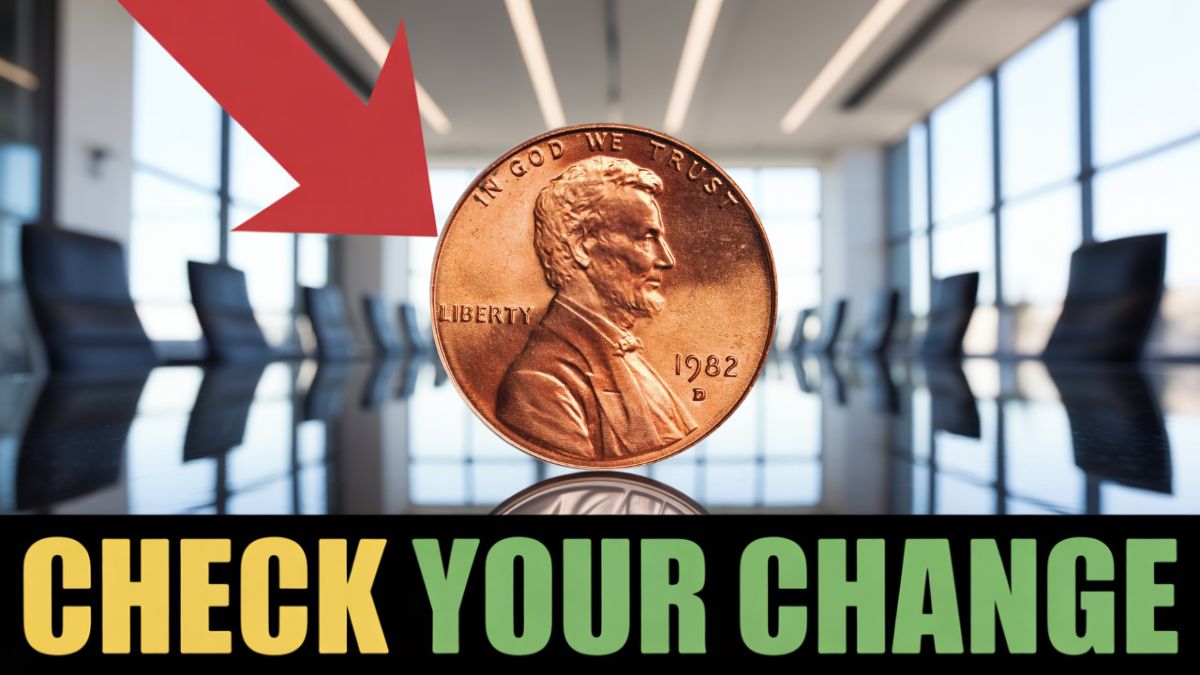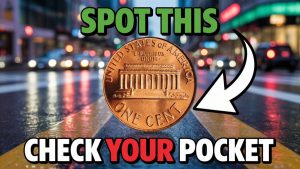There may be a treasure hidden in the old coins in your pocket or home, which can be worth lakhs—and the most surprising thing is that you are using it daily without knowing its real value. One such coin made in America is the 1982-D Small Date Bronze Penny, which has now become an extremely rare and valuable treasure in the eyes of coin collectors. Usually a 1-cent coin is not considered a special thing, but when it comes to this specific 1982-D Small Date Bronze Penny, it has fetched a price of more than $25,000 in auction.
This story is not just about a rare coin but about potential treasures that are being ignored in our daily routine. And this is the reason why this coin remains in the news even in 2025.
1982 Change: Why did the composition of the penny change?
1982 was the year the U.S. Mint made a major and economically significant decision. Due to ever-rising metal prices, the traditional 95% copper (or bronze) penny was changed to a zinc base with a copper coating. This change was necessary because the cost of copper to make a penny was more than the value of the penny itself. As a result, both types of pennies—copper-based (bronze) and zinc-based—were produced simultaneously in 1982, leading to many variations in design and minting.
This was also the time when design variations such as the ‘Large Date’ and ‘Small Date’ also arose. Normally, the Denver Mint (marked ‘D’) was not supposed to produce a bronze small date penny. But a mistake was made that led to this rare combination—the 1982-D Small Date Bronze Penny—and it is that mistake that has made it so valuable.
How to identify this rare 1982-D Small Date Bronze Penny?
To identify this coin, not only your eyes but also some technical understanding are required. It is not easy to differentiate between an ordinary-looking penny and this rare variant. Below are some important points that can help you:
1. Examine the data design in depth.
The coins minted in 1982 had two major design variations—Large Date and Small Date. The date numbers in the Small Date version are more compact. Pay special attention to the shape of the “8” and “2”:
- Both loops of the “8” appear to be at the same height.
- The bottom part of the “2” is more rounded.
2. “D” mint mark is a must.
Not just the small date, this coin should also have a “D” mint mark indicating the Denver Mint. If there is a “P” or “S,” then this is not the coin we are talking about.
3. Check the weight.
This is the most reliable way to identify. The bronze penny weighs about 3.11 grams, while the zinc version weighs around 2.5 grams. If you have a digital scale, you can measure the weight to solve this mystery.
4. Check the color and shine.
Although this method is not as reliable as the color of coins can change over time, bronze pennies generally have a depth and thickness, while zinc coins have a light golden or yellow shine.
Why is this coin in the news again in 2025?
The question is very reasonable: why is the coin made in 1982 becoming so popular now? There is a simple reason for this—this coin can still be in circulation today. According to experts, very few (possibly 2 or 3) original 1982-D Small Date Bronze Pennies have been officially confirmed so far. This means that some more coins may still be out there in banks, shops, or even in your home—all it takes is proper identification.
In 2016, one such confirmed copy sold at auction for over $18,000, and another variant has been valued at up to $25,000. Now that people are becoming aware on platforms like social media and YouTube, both the interest and the price of this coin are constantly growing.
What to do if you find such a coin?
Luck can knock at the door at any time, and if you find yourself the owner of a coin that matches this description, follow the steps below without delay:
1. Check the weight on a digital scale.
- This is the first and most important test.
2. Take a picture of the coin and compare it.
- Compare the pictures of the small date design available online.
3. Get a professional authentication.
- Get the coin authenticated by PCGS (Professional Coin Grading Service) or NGC (Numismatic Guaranty Corporation).
4. Contact an auction or valuation.
- If the coin is certified, contact a reputable auction house or coin dealer.
Conclusion: Luck could be in your pocket.
The most important thing to take away from this article is that you should not take coins lightly. The 1982-D Small Date Bronze Penny is an example of how an ordinary-looking coin can completely change your financial life. It was not just a flawed minting incident, but today it has become a rare treasure.
Today, when most financial transactions have gone digital, the world of old coins still has that charm and excitement. So the next time you return change or count old coins, take a moment and take a closer look. You may have the coin in your hand that will make you lucky.
FAQs
Q. What is the 1982-D Small Date Bronze Penny?
A. It’s a rare U.S. penny mistakenly struck in bronze with a small date design at the Denver Mint. Only a few exist.
Q. Why is it so valuable?
A. Because it was not supposed to exist. It’s an error coin with extreme rarity, fetching over $25,000 in auctions.
Q. How can I identify one?
A. Check for a small date, “D” mint mark, a weight of 3.11 grams, and a darker bronze tone.
Q. Is this penny still in circulation?
A. Yes, experts believe a few could still be in everyday coin jars or pocket change.
Q. What should I do if I find one?
A. Get it authenticated by PCGS or NGC, then consult coin dealers or auction houses for valuation.


